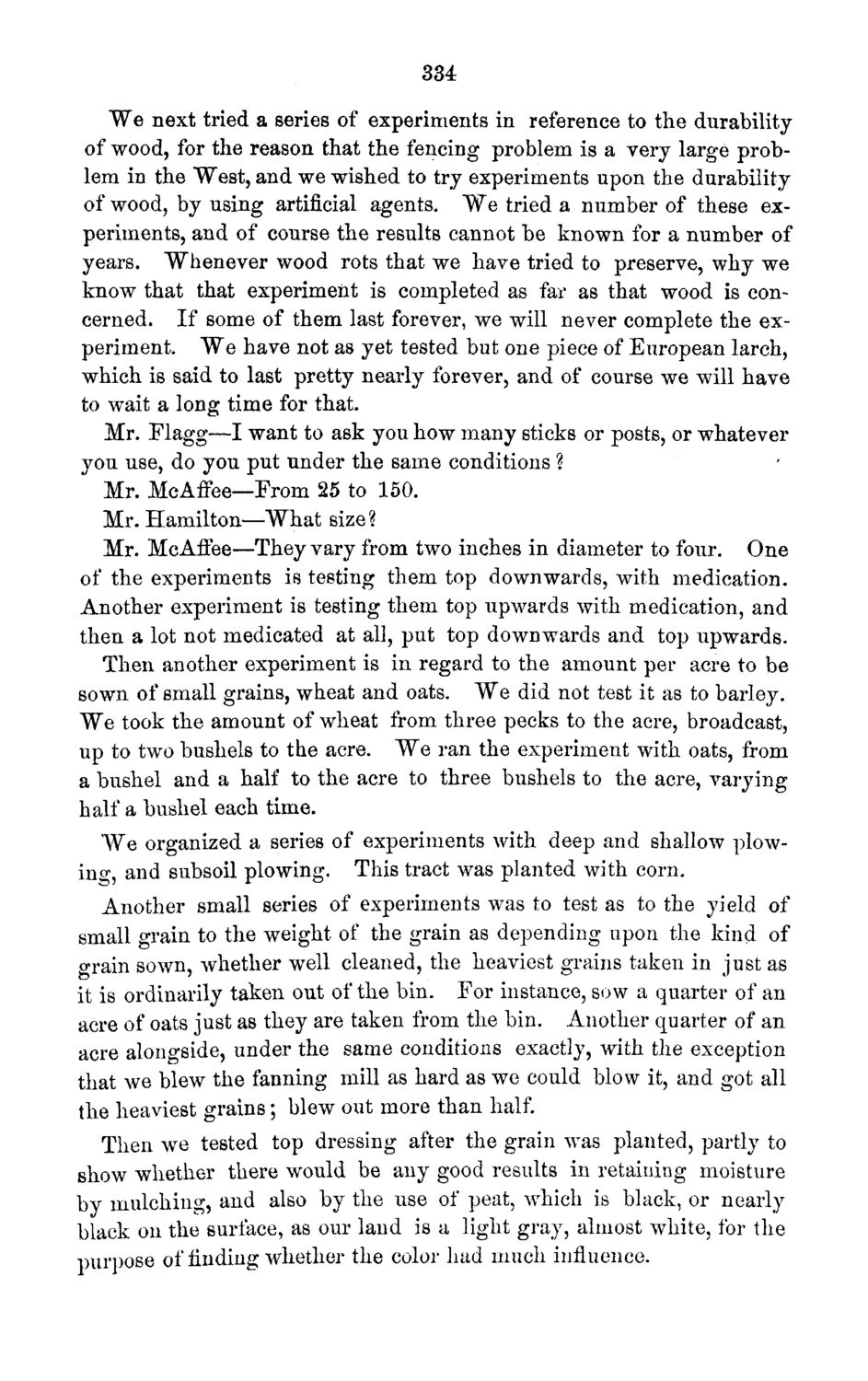| |
| |
Caption: Board of Trustees Minutes - 1871
This is a reduced-resolution page image for fast online browsing.

EXTRACTED TEXT FROM PAGE:
334 We next tried a series of experiments in reference to the durability of wood, for the reason that the fencing problem is a very large problem in the West, and we wished to try experiments upon the durability of wood, by using artificial agents. We tried a number of these experiments, and of course the results cannot be known for a number of years. Whenever wood rots that we have tried to preserve, why we know that that experiment is completed as far as that wood is concerned. If some of them last forever, we will never complete the experiment. We have not as yet tested but one piece of European larch, which is said to last pretty nearly forever, and of course we will have to wait a long time for that. Mr. Flagg—I want to ask you how many sticks or posts, or whatever you use, do you put under the same conditions ? Mr. McAffee—From 25 to 150. Mr. Hamilton—What size? Mr. McAffee—They vary from two inches in diameter to four. One of the experiments is testing them top downwards, with medication. Another experiment is testing them top upwards with medication, and then a lot not medicated at all, put top downwards and top upwards. Then another experiment is in regard to the amount per acre to be sown of small grains, wheat and oats. We did not test it as to barley. We took the amount of wheat from three pecks to the acre, broadcast, up to two bushels to the acre. We ran the experiment with oats, from a bushel and a half to the acre to three bushels to the acre, varying half a bushel each time. W e organized a series of experiments with deep and shallow plowi n g and subsoil plowing. This tract was planted with corn. Another small series of experiments was to test as to the yield of small grain to the weight of the grain as depending upon the kind of orain sown, whether well cleaned, the heaviest grains taken in just as it is ordinarily taken out of the bin. For instance, sow a quarter of an acre of oats just as they are taken from the bin. Another quarter of an acre alongside, under the same conditions exactly, with the exception that we blew the fanning mill as hard as we could blow it, and got all the heaviest grains; blew out more than half. Then we tested top dressing after the grain was planted, partly to show whether there would be any good results in retaining moisture by mulching, and also by the use of peat, which is black, or nearly black on the surface, as our land is a light gray, almost white, for the purpose of finding whether the color had much influence.
| |